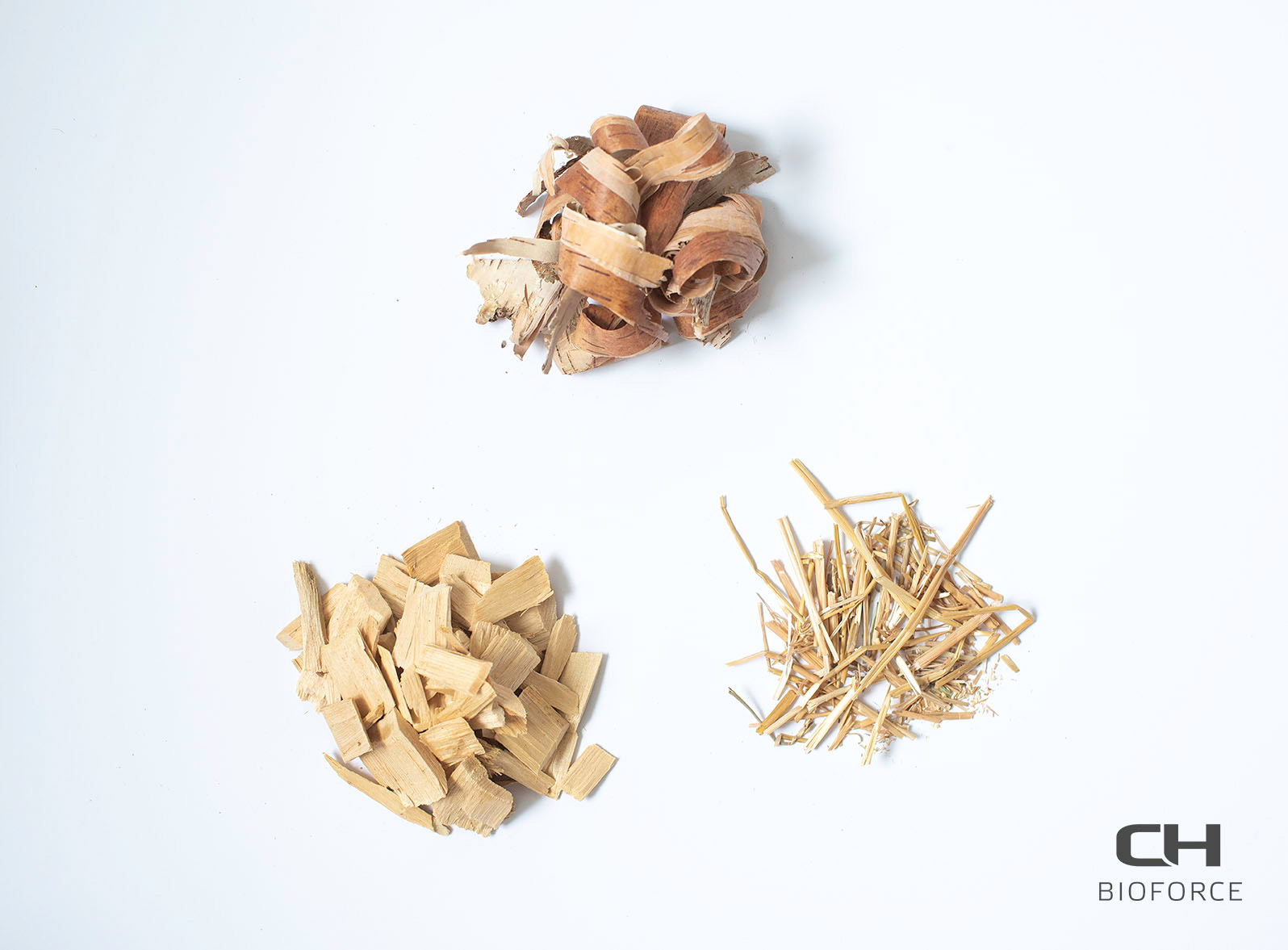Straw as a promising sustainable feedstock option for the production of bio-based polymers

How can clothes, plastics and packaging be produced in a sustainable way? The ever-growing demand for environmentally friendlier options is shaping the production of daily consumables worldwide.
How can we replace oil, cotton and starch?
The most common sources of feedstock for our everyday consumables are found in oil, cultivated plants such as cotton, and pulping industries or similar that use wood as feedstock.
None of these approaches provide an optimal way of manufacturing clothes, plastics, cosmetics, packaging, or other goods we use in our daily lives. Oil-based plastics are causing sea pollution, and the oil industry as such is a major contributor to climate change. It is also clear that the limited farmland should be used to feed the growing population instead of growing cotton for the textile industry or starch for the paper and board industry.
Furthermore, the current pulping industry offers a poor material efficiency balance, using less than 50% of the biomass required as it is focused on extracting cellulose. The remaining half, comprising hemicellulose and lignin, is usually burnt to create energy, despite the fact that these materials could be put to good use elsewhere. In the worst case where biorefineries use unsustainable feedstock, rainforests are cut down to grow forest plantations that are ultimately used to provide us with toilet paper.
All in all, the current feedstock options for our daily consumables do not sufficiently fulfil the growing market need for sustainable and renewable raw materials.
Straw could be the answer
CH-Bioforce Oy has developed a breakthrough biomass fractionation technology which can utilize current waste stream such as straw as feedstock while raising material efficiency from less than 50% to over 90%.
Our technology allows the extraction of lignocellulosic biomass constituents in an economically sound way, with extremely high purity, and on an industrial scale. The technology produces high quality biopolymers: dissolving pulp, polymeric hemicellulose, and sulphur-free lignin. Each of these material streams has a wide range of possible end applications, especially in terms of replacing fossil-based materials and less environmentally friendly bio-based products such as food-based starch or cotton.
Another unique feature of our technology is that it can utilize almost any kind of biomass as feedstock, both wood and non-wood such as straw and bagasse. Crop residues are still a largely unused feedstock in the bioeconomy. Today there are over 400 million tons of crop residues in Europe alone, of which wheat residue accounts for over 150 million tons. Most of this valuable feedstock is burnt for energy or simply left to rot. To illustrate the scale: Europe’s total pulp production capacity, by comparison, was reported as being 42 million tons in 2017.
CH-Bioforce therefore offers a sustainable and completely bio-based alternative to oil- and food-based feedstock. Our technology enables the conversion of current waste material to valuable biopolymers that can be used in higher value applications, for example in the chemical, paper and cardboard board, and textile industries.
Follow us for latest news!
Twitter @CHBioforce
LinkedIn CH-Bioforce Oy
YouTube CH-Bioforce Oy
CH-Bioforce Oy
CH-Bioforce Oy is a Finnish start-up founded in 2016. The company’s innovative BIOFORSENSE® biomass fractionation technology dates back to 2011, when inventors Lari Vähäsalo, Nicholas Lax and Sebastian von Schoultz made their first findings. Today, the company forms part of the Chemec group, which operates in the chemical industry. CH-Bioforce currently employs ten members of staff. Our R&D and pilot plant is located in Raisio, Finland.
For more information, please contact:
Lari Vähäsalo, PhD
R&D Director, CH-Bioforce Oy
